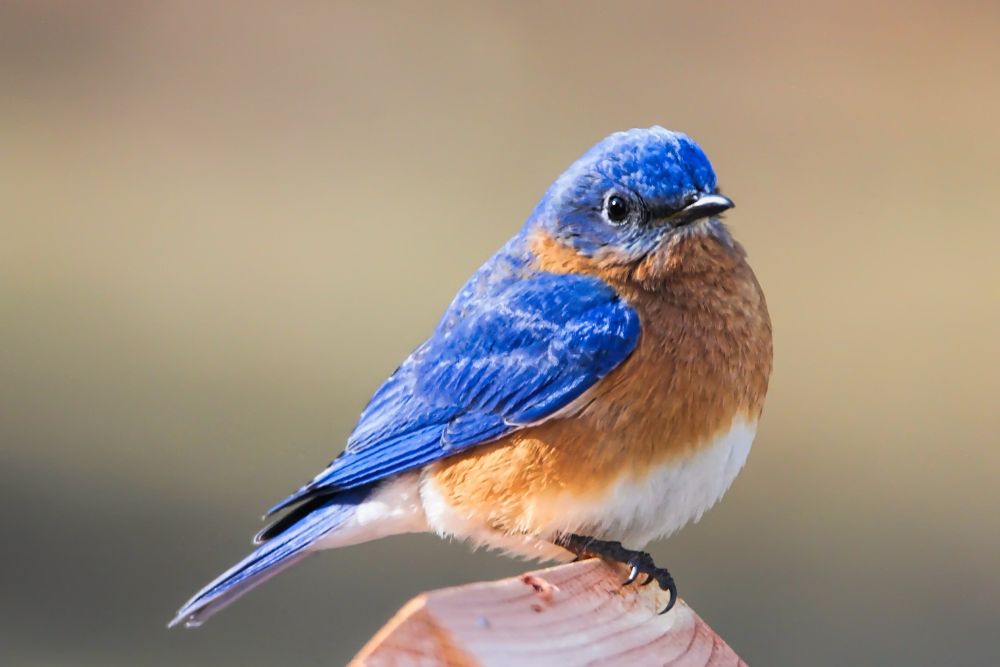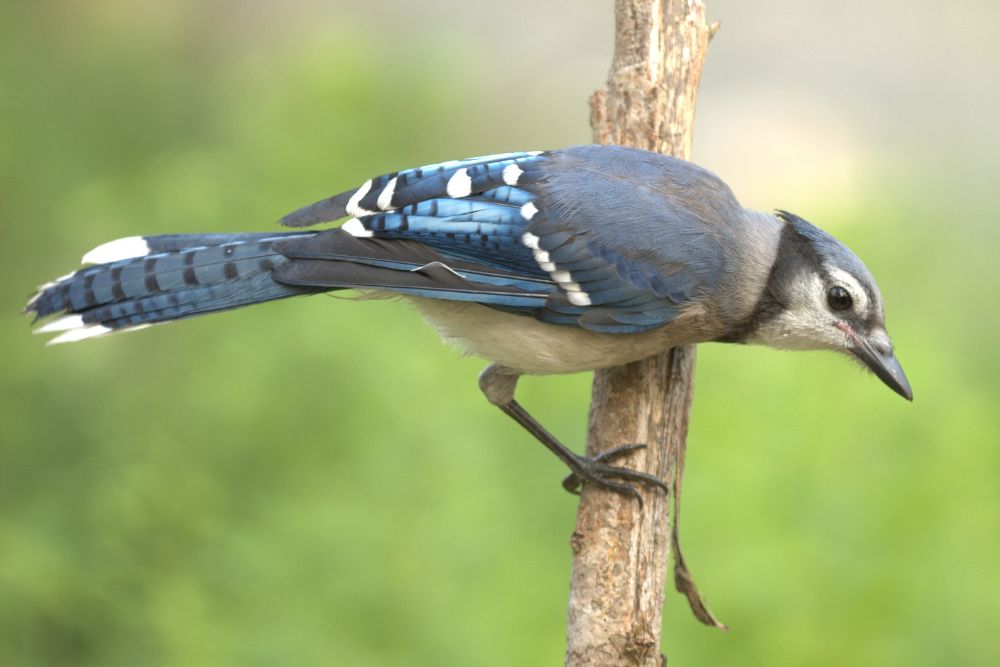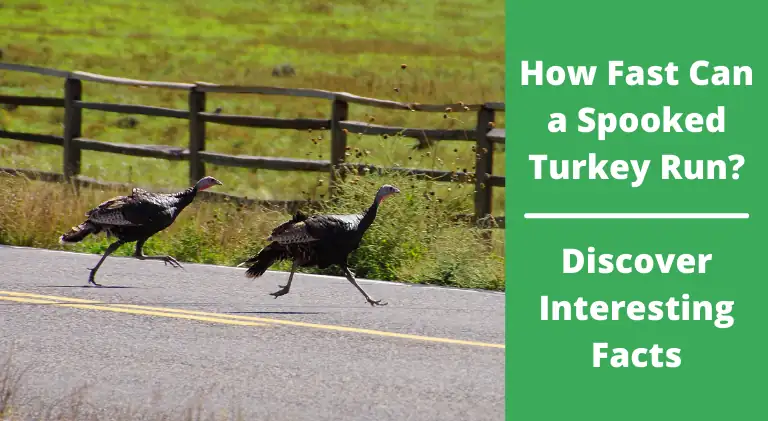Blue Jay vs. Bluebird: Similarities and Differences to Know
When it comes to bird watching, Blue Jays and Bluebirds are two of the most popular and beloved species in North America.
Although they may share similar blue coloring, they are distinct species with unique characteristics.
Let’s take a closer look at the similarities and differences between Blue Jays vs Bluebirds.

Blue Jay vs. Bluebird: Discover all the Differences
Here’s a quick summary of the article that will give you a brief idea on what are the differences between blue jays and bluebirds.
| Category | Blue Jays | Bluebirds |
|---|---|---|
| Family | Corvidae | Turdidae |
| Genus | Cyanocitta | Sialia |
| Species | Cyanocitta cristata | Sialia sialis |
| Phylum | Chordata | Chordata |
| Class | Aves | Aves |
| Order | Passeriformes | Passeriformes |
| Plumage | Blue and white feathers with black markings | Blue, orange, and white feathers |
| Male Appearance | Similar to females, but slightly larger with brighter colors | Brighter blue on the back, wings, and tail with a rust-colored breast |
| Female Appearance | Duller in color with a grayish-blue head and wings | Similar to males, but with less vibrant colors |
| Size | 9-12 inches in length | 5.5-7.5 inches in length |
| Weight | 2.5-3.5 ounces | 0.8-1.2 ounces |
| Wingspan | 13-17 inches | 9-12 inches |
| Bill | Strong, pointed, and black | Thin, pointed, and black |
| Call | Loud and distinctive, including a “jay-jay” call and a rattling call | Sweet and melodious, including a warbling song |
| Diet | Omnivorous, eating insects, nuts, seeds, fruits, and small animals | Insectivorous, eating primarily insects and spiders |
| Behavior | Aggressive and territorial, often stealing food from other birds | Calm and peaceful, often seen perching on wires or fence posts |
| Breeding | Monogamous and lay 2-7 eggs per clutch | Monogamous and lay 3-7 eggs per clutch |
| Geographic Range | Eastern and central North America | Throughout North America, including Mexico and Canada |
| Habitat | Forests, woodlands, and suburban areas | Open fields, meadows, and orchards |
| Lifespan | Up to 26 years in captivity | Up to 10 years in the wild |
| Conservation Status | Least Concern | Near Threatened |
| Nesting Preferences | Prefer nesting in coniferous trees or bushes | Prefer nesting in cavities, including birdhouses or nest boxes |
| Types of Food | Insects, nuts, seeds, fruits, and small animals | Insects, spiders, and occasionally fruits and berries |
| Eggs | Blue or green with brown speckles; lays 4-5 eggs | Light blue or white; lays 4-7 eggs |
| Incubation Period | 16-18 days | 12-14 days |
| Fledging Period | 17-21 days | 16-24 days |
Classification
Blue Jays and Bluebirds are both members of the Passerine bird family, which includes perching birds such as sparrows, finches, and warblers. However, they belong to different genera. Blue Jays are part of the genus Cyanocitta, while Bluebirds belong to the genus Sialia.
Plumage
Both Blue Jays and Bluebirds have blue plumage, but the shades of blue are different. Blue Jays have a bright blue crest on their heads, with a blue back, wings, and tail.
Their underparts are white or light gray, and they have black collars and markings on their wings.
Bluebirds, on the other hand, have a softer, more muted blue coloration on their backs, wings, and tails, with rust-colored breasts and white bellies.
Blue Jay Male vs. Female
Male and female Blue Jays look similar, with the males being slightly larger. They have the same blue and white coloring, with the males having slightly longer crests.
Bluebird Male vs. Female
Male and female Bluebirds also look similar, with the males having brighter blue coloring and slightly larger bills. The females have duller blue coloring with grayish-brown heads and backs.
Size
Blue Jays are larger than Bluebirds. On average, Blue Jays are about 9-12 inches long, while Bluebirds are only 6-8 inches long.
Weight
Blue Jays are also heavier than Bluebirds, with the average weight of a Blue Jay being around 2.5-3.5 ounces, while Bluebirds weigh in at around 1-1.5 ounces.
Wingspan
Blue Jays have a wider wingspan than Bluebirds, with an average wingspan of 13-17 inches, while Bluebirds have a wingspan of around 9-12 inches.
Bill
Blue Jays have a strong, curved bill that is used for cracking open nuts and seeds. Bluebirds have a shorter, straighter bill that is used for catching insects.
Call
Both Blue Jays and Bluebirds have distinctive calls. Blue Jays have a loud, raucous call that is often described as sounding like “jay-jay.” Bluebirds have a soft, melodious song that is often described as sounding like “tur-ee.”
Diet
Blue Jays and Bluebirds have different diets. Blue Jays are omnivores and will eat almost anything, including insects, nuts, seeds, fruit, and small animals such as mice and frogs.
Bluebirds are insectivores and mainly eat insects such as grasshoppers, beetles, and caterpillars.
Behavior
Blue Jays are known for their bold and aggressive behavior, often chasing away other birds from feeders and nesting sites.
Bluebirds, on the other hand, are more docile and peaceful, often living in groups and sharing nesting sites.
Breeding
Blue Jays and Bluebirds have different breeding habits. Blue Jays breed in late spring and early summer, building their nests in trees or shrubs.
Bluebirds typically breed in early spring, building their nests in cavities in trees or nesting boxes.

Geographic Range
Blue jays are found throughout the eastern and central regions of North America, from Canada down to the Gulf of Mexico.
They are year-round residents in many areas, but some birds may migrate south during the winter months.
Bluebirds, on the other hand, have a more restricted range.
They are primarily found in the central and eastern regions of North America, ranging from southern Canada down to the Gulf Coast.
Some species of bluebirds, such as the western bluebird, are found in the western United States as well.
Habitat
Blue jays can be found in a variety of habitats, including deciduous and coniferous forests, parks, gardens, and urban areas. They prefer areas with trees for nesting and foraging.
Bluebirds are cavity nesters, which means they require suitable trees with natural cavities or man-made nest boxes for breeding. They can be found in open areas with scattered trees, meadows, farmlands, and suburban gardens.
Lifespan
Blue jays have an average lifespan of 7-8 years in the wild, although they can live up to 26 years in captivity.
Bluebirds have a shorter lifespan, with an average of 2-6 years in the wild.
Conservation Status
Blue jays are listed as a species of least concern by the International Union for Conservation of Nature (IUCN). While they may face threats from habitat loss and fragmentation, their populations are generally stable.
Bluebirds, on the other hand, have faced declines in their populations due to habitat loss, competition for nest sites with non-native species, and predation by invasive species such as house sparrows and European starlings.
However, efforts to provide nest boxes and manage habitats have helped stabilize some populations.
Differences In Nesting Preferences
Blue jays typically build their nests in trees, bushes, or shrubs using twigs, bark strips, grass, and other materials.
They may also use abandoned nests of other birds. The female incubates the eggs for around 16-18 days, and the young leave the nest around 17-21 days after hatching.
Bluebirds, on the other hand, prefer to nest in natural cavities such as tree holes or in man-made nest boxes.
They may also use abandoned woodpecker holes. The female incubates the eggs for around 13-15 days, and the young leave the nest around 17-21 days after hatching.

Types of Food Blue Jays Love to Eat
Blue jays are omnivores, which means they eat a variety of foods including insects, nuts, seeds, berries, and small animals such as snails and mice. They are known to cache or hide food items in the fall to help them survive during the winter months.
Types of Food Bluebirds Love to Eat
Bluebirds primarily feed on insects such as grasshoppers, beetles, and caterpillars, but they also eat fruits and berries when available. During the winter months, they may switch to a diet of berries and fruits.
Frequently Asked Questions:
Q: What color is the female bluebird?
A: Female bluebirds are a duller shade of blue than males and have grayish-brown heads and back.
Q: Are bluebird babies blue?
A: No, baby bluebirds are born with a grayish downy plumage and do not develop their adult blue color until they molt their juvenile feathers.
Q: What colors are bluebirds attracted to?
A: Bluebirds are attracted to bright colors such as blue, purple, and red, and they may investigate brightly colored objects in their territory.
Last Minute Thoughts!
Blue jays and bluebirds are both beautiful and fascinating birds with unique characteristics and behaviors. While they may share some similarities in terms of their appearance and habitat, they also have distinct differences that set them apart.
In summary, blue jays are larger, heavier, and have a more aggressive demeanor compared to bluebirds. They have a more varied diet and are known for their loud and distinctive calls.
On the other hand, bluebirds are smaller and more delicate in appearance, with a sweet and melodious song. They have a more restricted diet and prefer open spaces with ample perching spots for hunting insects.
Despite their differences, both birds are important members of their respective ecosystems and play crucial roles in maintaining a healthy environment.
By learning about their similarities and differences, we can appreciate these magnificent creatures even more and work towards protecting them for future generations to enjoy.






